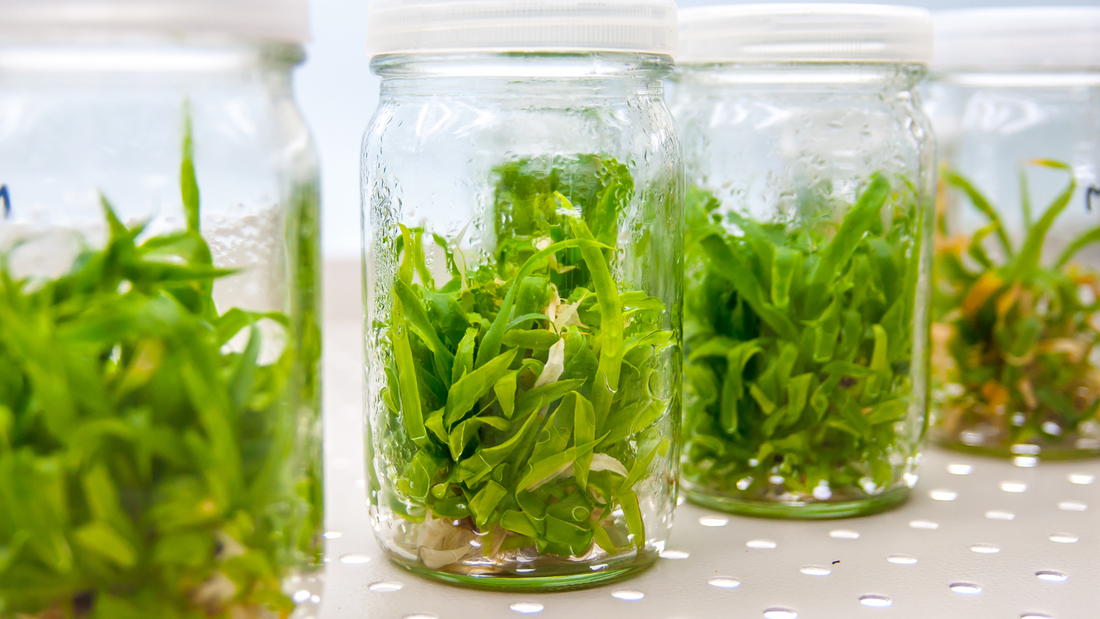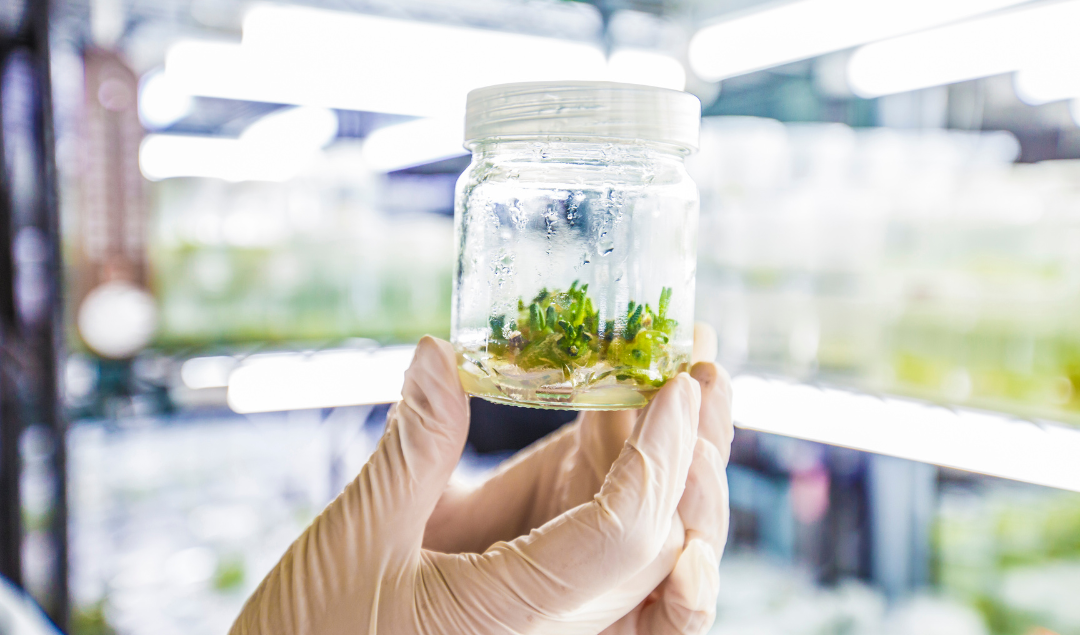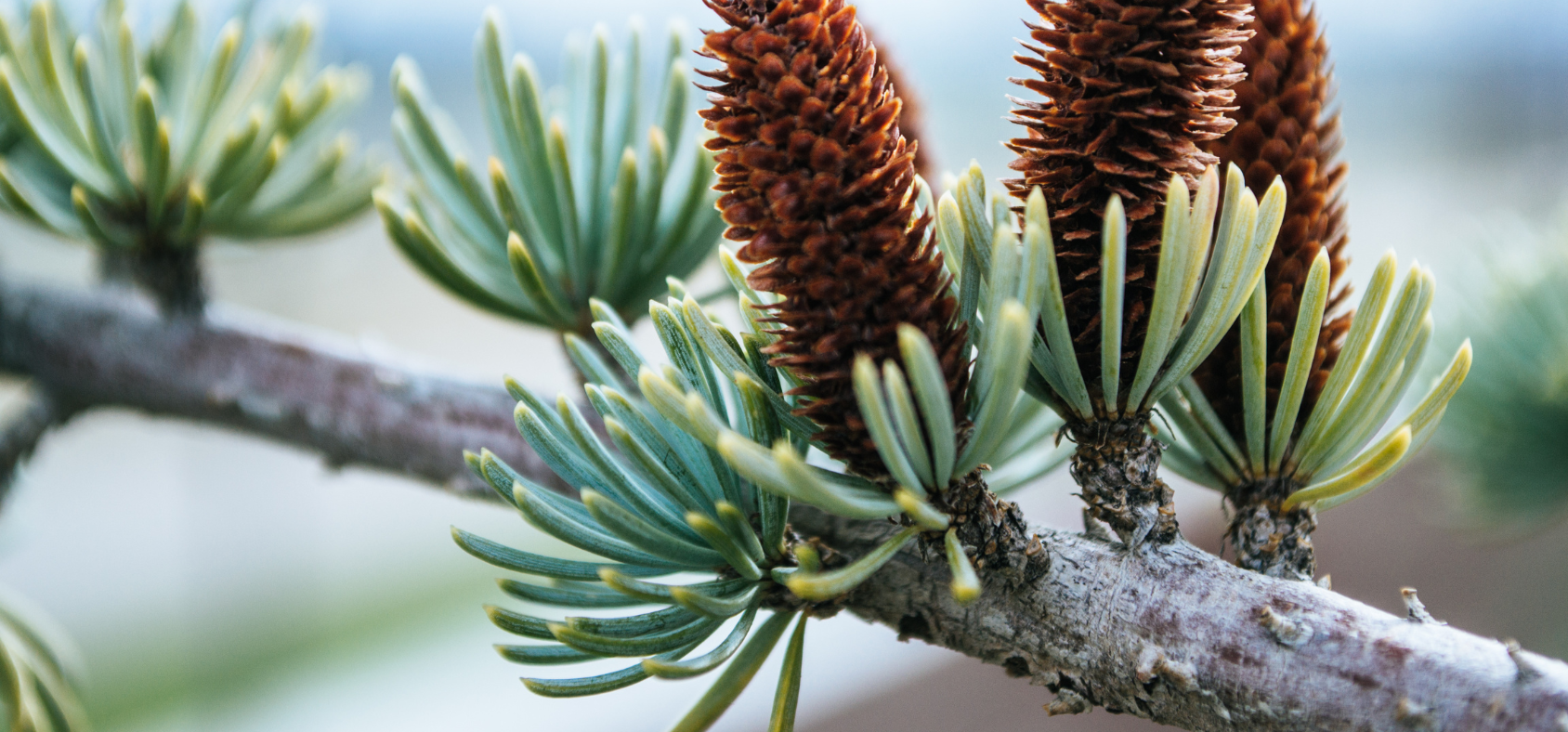
Historical Timeline of Tissue Culture
As a content and community manager, I leverage my expertise in plant biotechnology, passion for tissue culture, and writing skills to create compelling articles, simplifying intricate scientific concepts, and address your inquiries. As a dedicated science communicator, I strive to spark curiosity and foster a love for science in my audience.


Introduction
Plant tissue culture is a technique to grow plants in vitro (lab conditions) under a controlled aseptic environment using a single plant cell to tissues. The method is considered to be an advanced approach to growing disease-free plants on a large scale.
There are four ways to regenerate plants using the tissue culture technique:
- Axillary shoots proliferation (shoot culture)
- De novo formation of adventitious shoots through shoot organogenesis
- Node culture
- Somatic embryogenesis
Various biological species are being studied using plant tissue cultures in fundamental and applied research. Commercially propagating plant species and producing bioactive components using in vitro technology has become a lucrative industry worldwide.
Why is it so?
Because of the benefits, the technology offers to plant growers and businesses. Have a look at what they are:
- Need only a few tissues or a single cell to regenerate the whole plant.
- Do not require many mother plants to grow plants on a commercial scale.
- Provide disease-free plants.
- Provides plants in a shorter time than grown using conventional approaches.
- Plants can be grown off seasons throughout the year.
- Requires only a small space to store thousands of plants.
- Allow storing genetics of plants in a viable state for years.
- Allow conservation of plant species.
- Allow the production of bioactive compounds on a large scale.

However, these benefits were not always there, since the introduction of the technique. Over the years, many researchers have put their blood and sweat to develop this technique as it’s today and expand its applications to diverse areas.
This article provides a review of the historical timeline of tissue culture—what components of tissue culture were introduced when and by what scientists? Let’s go back in time together!
History of Plant Tissue Culture
The concept of tissue culture originated from the idea of totipotent—the ability of any plant cell to grow into a whole plant—a property of plant cells. Let’s have a look at the successive timeline for the development of the tissue culture technique:
- 1902: Gottlieb Haberlandt proposed the theoretical basis of plant tissue culture. He is known as the father of plant tissue culture. He experimented with isolated photosynthetic leaf cells but was unsuccessful in inducing any growth. However, he predicted that one can obtain artificial embryos from vegetative cells using this culturing technique and established the concept of totipotency.
- 1904: Henning isolated embryos of some crucifers and successfully grew on mineral salts and sugar solutions
- 1922: WJ Robbins and W. Kotte independently cultured small root tips of peas and maize. This led to the development of the concept of Organ culture.

- 1934: Gautheret cultured cambium cells of Salix caprea, and Populus nigra on Knop’s solution containing glucose and cysteine hydrochloride. The cultures survived a few months.
- 1939: Gautheret obtained the first established continuously growing tissue cultures from carrot root cambium. At this same point, P. R. White Demonstrated indefinite culture of tomato roots on subculturing in a liquid medium.
- 1941: J Van Overbeek demonstrated that coconut milk is essential for the growth and development of very young Datura embryos.
- 1942: P.R. White and A.C Braun began studying crown galls and tumor formation in plants.
- 1952: G. Morel and Martin C demonstrated that virus-free plants can be recovered from infected plants using shoot meristem culture.
- 1957: F. Skoog, and C.O. Miller proposed that a particular auxin-cytokinin ratio can regulate shoot and root initiation in cultured callus.
- 1959: G. Melchers and Bergmann L cultivated haploid tissues other than pollen for the first time.
- 1960: E.C Cocking isolated and cultured protoplasts after digesting the cell walls enzymatically and showed new cell wall regeneration on tomato fruit locule protoplasts. This same year L. Bergmann first obtained callus by transferring cells from suspension cultures on to solid medium and G. Morel developed a method of producing virus-free Cymbidium progenies through meristem culture.
- 1966: S G Guha and S C Maheshwari cultured anthers and pollen and produce haploid embryos.
- 1973: I. Potrykus attempted the first chloroplast and nucleus transfer from Petunia hybrida into albino protoplasts of the same species.
- 1974: J P Nitsch cultured microspores of Datura and Nicotina, doubling their chromosome number and harvesting seed from homozygous diploid plants within five months. At the same time, Mursahige developed the concept of developmental stages in cultures in vitro: Stage I: Establishment; Stage II: Multiplication; and Stage III: Rooting and hardening.
- 1975: G. Morel established cold storage of regenerated plants for a year.
- 1978: A. Zelcer, D. Aviv, and E. Galun devised a method for transferring organelles from one plant to another called Donor - Recipient protoplast fusion.
- 1981: P. J. Larkin and W. R. Scowcraft developed the concept of somaclonal variation. At the same time D. Wilson, G. Patnaik, G., and E. C. Cocking regenerated a whole plant from a single free cultured tobacco protoplast.
- 1986: J. D. Hamill, A. J. Parr, R. J. Robins, and M. J. C. Rhodes established hairy root cultures of Beta vulgaris and Nicotiana rustica following infection with Agrobacterium rhizogenes. Compared to in vitro roots of the same variety, the transformed cultures synthesized their characteristic secondary products.
- 1991: C. Sautter, H. Waldner, and G. Neuhaus developed a novel method for the acceleration of microprojectiles, called micro-targeting.

HOW DOES PLANT CELL TECHNOLOGY HELP YOU TO ACHIEVE YOUR TISSUE CULTURE GOALS?
Plant Cell Technology is helping tissue culturists worldwide by providing unique and world-class products and services that smoothen their process. The PCT Store has MS media, agar, gellan gum, Plant Preservative Mixture (PPM™), culture vessels, Biocoupler™, and masks in its store to facilitate your processes.
And, that’s not it! Plant Cell Technology also offers consultation services to culturists of all sizes that help to get instant solutions to your tissue culture problems.
You can either book a one-on-one consultation call or a physical visit to your lab. We help you at every step of the tissue culture process, ranging from establishing a tissue culture lab to preventing contamination problems or any specific challenges in your process.
So, visit plantcelltechnology.com today and learn more about our products and services and how they help you excel in your tissue culture processes.
Happy Culturing!
Blog Categories
View by Level
Popular Blogs

Media pH: Why It Matters More Than You Think in Plant Tissue Culture
Introduction Plant tissue culture is a cornerstone technique in modern plant biotechnology, enabling the propagation of plants under sterile and...
Read More
Can We Grow Wood in a Lab? The Future of Tissue Culture in Forestry
Introduction Wood has long been a cornerstone of human civilization—used for shelter, tools, paper, energy, and countless everyday items. However,...
Read MoreSubscribe to Our Newsletter









Join the conversation
Your email address will not be published. Required fields are marked